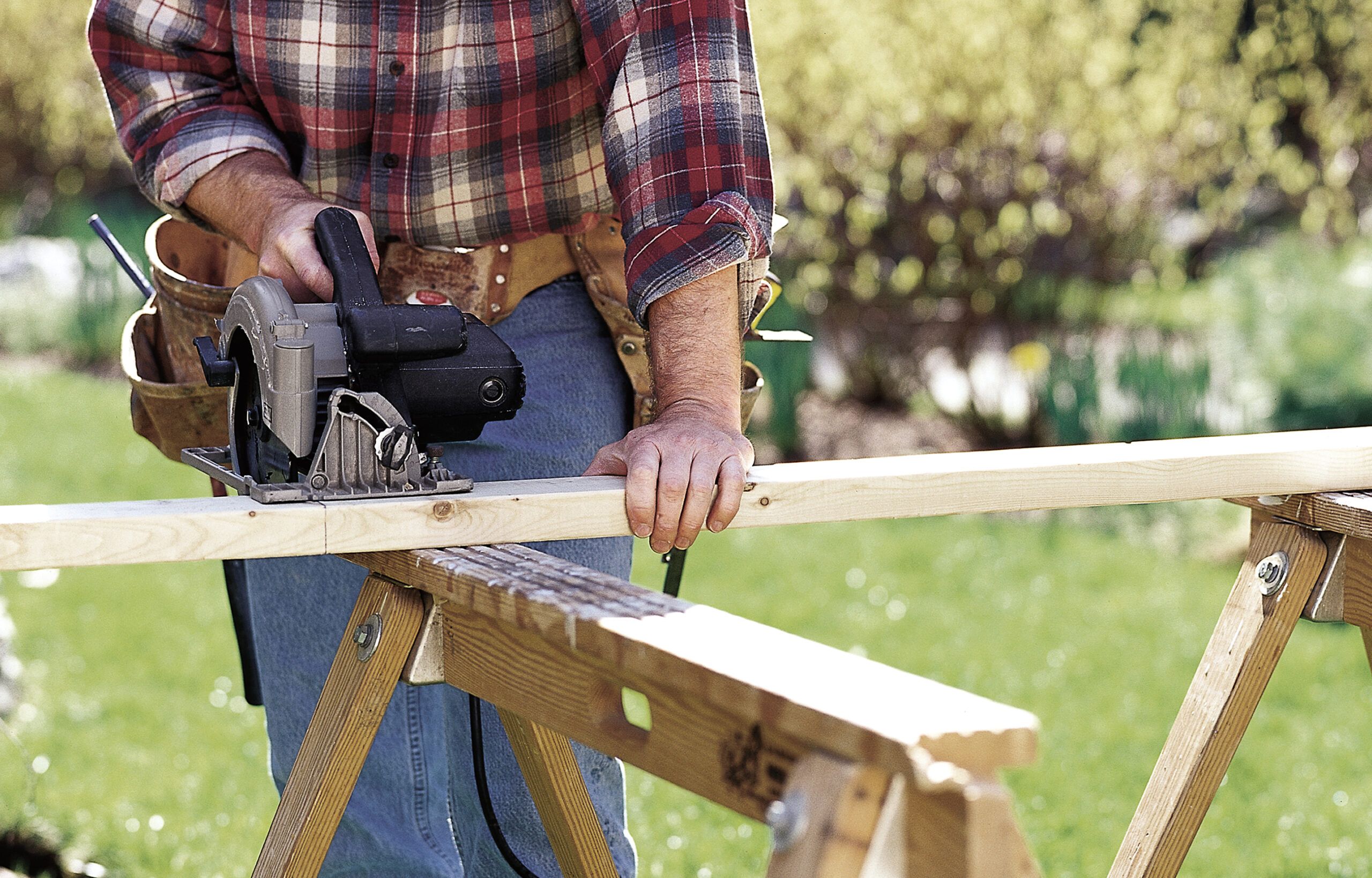Making the Cut
A good circular saw should have enough raw power to slice through everything from wet lumber to dense hardwood without bogging down. “When the motor slows, the blade heats up and dulls quickly,” explains Tom Silva, This Old House general contractor. This not only produces a poor cut, but it’s also dangerous because the blade can climb out of the kerf and push the saw back toward the user.
However, evaluating power from the motor ratings can be misleading. Amps indicate only the amount of electricity a motor draws, not the power it sends to the blade. Horsepower accounts for torque (rotational force), but not necessarily under working conditions.
In the end, the most reliable appraisal may be price. A dependable sidewinder—the more compact design, in which the motor sits alongside the blade—starts at around $100. There are many saws on the market under this price, but they’re not as powerful, nor are they built for a lifetime’s use. Professional-grade sidewinders, which run quieter and cut through dense wood better, cost between $125 and $150. TOH master carpenter Norm Abram prefers this tool, noting that buyers should choose one based on balance and maneuverability. “I’d never buy a saw I didn’t have a chance to hold first,” he says.
On the other hand, a good worm-drive saw, Tom’s choice for framing because of its high torque output (its beefy spiral gear transfers power to the blade more efficiently), will set you back at least $200. Either way, a top-of-the-line saw, if treated with care, should still be cutting well when you’re ready to hand it down.
Worm Drive
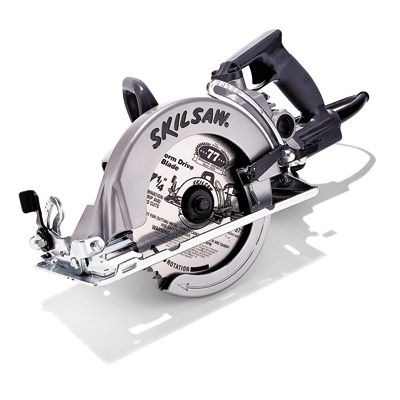
The motor is in line with the blade, delivering enough torque to carve up wet lumber or saw through concrete, which makes a worm drive ideal for framing or major renovation jobs. With the handle farther back, a user can better resist kickback and steer the 16-pound saw through long rips. As on most full-size worm-drive saws, the blade of this Skil HD77 sits to the motor’s left—in easy view for right-handed users.
About $200; amazon.com
Sidewinder
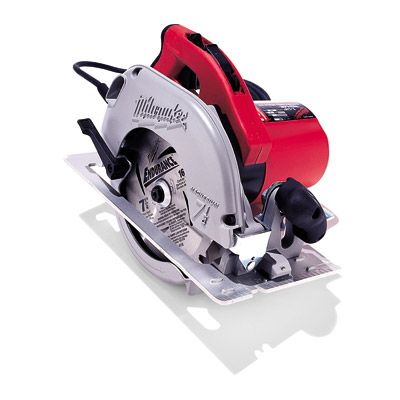
The motor sits alongside the blade, making for a lighter (11 pounds or less) saw, which is more maneuverable over a long day than a worm drive. The helical gearing on higher-end sidewinders, such as this Milwaukee 6390-20, beefs up the torque, making these models worthy competition for worm drives.
About $140; mytoolstore.com
Small Sidewinder
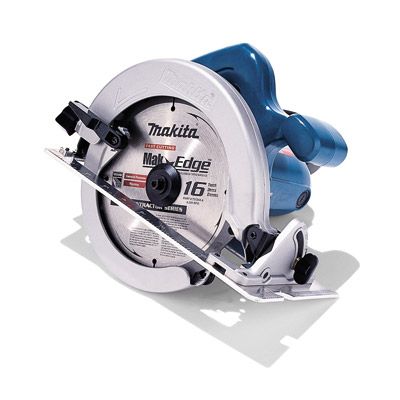
Weight, balance, and handle size are all key features to consider when choosing a saw that fits you. For a slight-bodied person, a small pro model like this 7.7-pound Makita 5740NB may be more appropriate than a full-size sidewinder.
About $95; toolbarn.com
Cordless
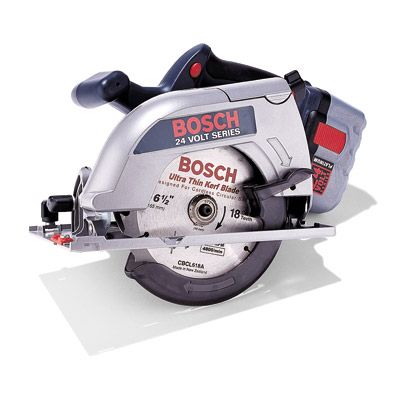
Battery-driven models have increased in size as their power packs have gained voltage, making them convenient tools out in the field or when the electricity’s not on. This Bosch 1660K sports a 6 ½-inch blade and a 24-volt battery—the largest in its class. However, cordless models still have limited run times and generate less torque than corded saws.
About $450; woodworker.com
Trim Saw

For finish work or paneling, Norm Abram prefers a small trim saw; blades range from 3½ to 4½ inches. This Porter-Cable 314, with a 4½-inch blade, is the one worm drive on the market—all others are sidewinders.
About $240; deltaportercable.com
Features: Ease of Adjustment
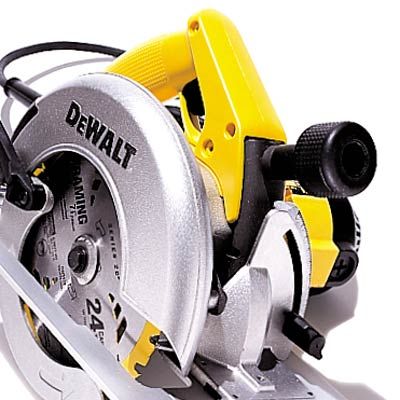
Large, smooth-cornered lever locks and full-round knobs that can be tightened down with the whole hand, like this one on the DeWalt 364, make it faster and easier to change the depth of cut and bevel settings than small, hard-to-grasp levers and wing nuts.
About $160; dewalt.com
Features: Shoe Styles
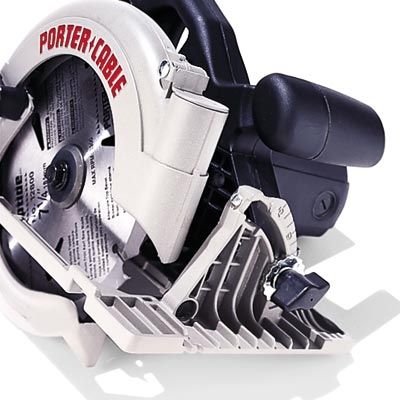
“No matter what you do, you will drop your saw,” warns Tom Silva. Cast-metal shoes with raised reinforcing ribs on the top surface, as seen here on a Porter-Cable 347, won’t bend like flat aluminum shoes if the saw hits the ground. On the other hand, a cast metal shoe adds weight to a saw.
Similar to shown: Hitachi C8; about $185; acetoolonline.com
Setting Blade Depth
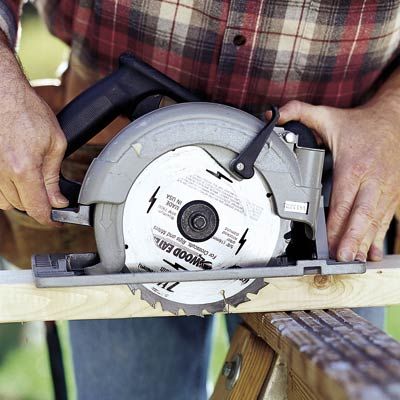
Set the blade so that its bottommost tooth is ⅛ to ¼ inch below the work piece. Always make sure the power source is unplugged before making any adjustments to the saw.
Safety First
Circular saws can be dangerous. Always wear safety glasses and follow the safety instructions printed in your saw’s owner’s manual.
Setup
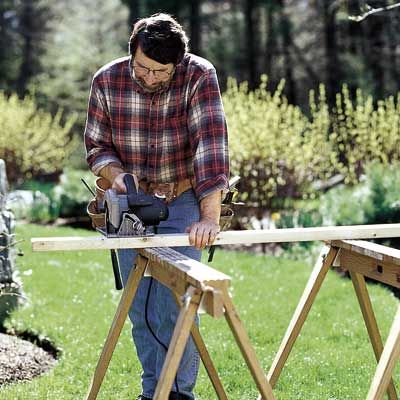
Support the material on a bench or two strong sawhorses, overhanging enough so that the cut piece will fall. Never prop up this off-cut, or the material will buckle and bind the blade, causing a dangerous kickback.
Cross-Cutting
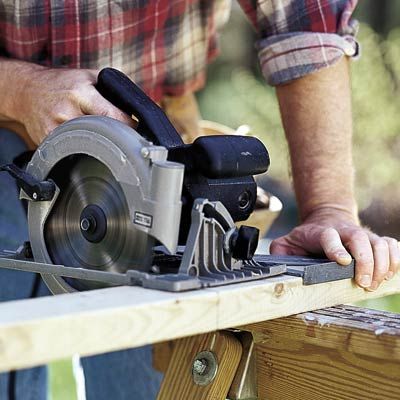
For an accurate cut, mark the side of the material that will become waste, then line up the blade to just leave the pencil line on the keep side. To make the cut, support the front of the saw shoe on the work piece, but keep the blade about an inch from the material. Then start the saw, letting it come up to full speed before pushing it steadily through the wood.
Tip: For 90-degree cross-cuts, use a speed square to guide the saw.
Ripping*
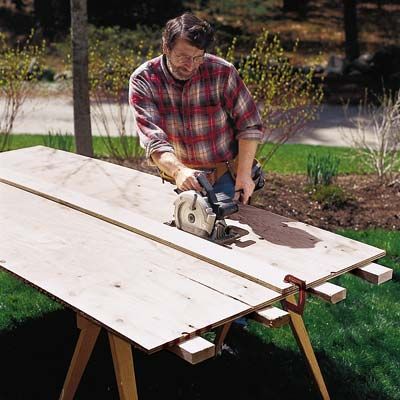
Place large sheets of plywood on 2x4s laid across sawhorses and positioned to support both sides of the cut. Clamp a strip of plywood or other straight material to the work piece at the right distance to guide the saw shoe while cutting the line. Walk alongside the plywood as you cut, holding the cord to make sure it doesn’t get snagged.
Tip: For narrow rips, keep the saw straight by holding the shoe with your free hand and bracing your forefinger on the wood’s edge. You can also use a pair of locking pliers (below) or a rip-fence accessory.
*sawing with the grain
Finish Cutting
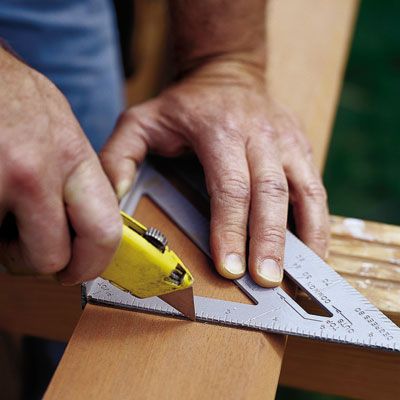
As a circular saw blade cuts up through wood, the fibers on top splinter off, a condition known as tear-out (usually worse on cross-cutting). If appearances are important, put the good side down when cutting. If you must cut the board face-up or if both sides will show, score the cut line with a utility knife before cutting.
Tip: When cutting a finished piece, such as a painted door, duct-tape the bottom of the saw shoe so it can’t scratch the finish.
Plunge Cutting*

A saw blade sinking through the face of a board can “walk” back across the surface, so make sure that no part of your body or the cord is in line with blade. Release the lever for the depth setting and drop the shoe below the blade. Then tighten the lever slightly to keep the blade from dropping, but don’t lock it all the way. Bring the saw up to full speed, lift the guard, and slowly push the body of the saw down to start the cut.
Tip: Make sure to start back far enough so that you only push the saw forward; never drag a spinning saw back.
*starting the cut in the middle of a board
Ripping Wider Lumber
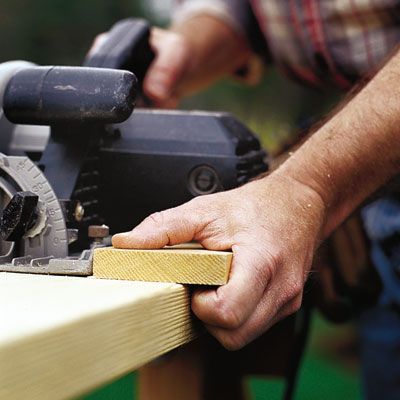
If a board is too wide for the saw shoe to hang over the edge during a rip cut, hold a narrow scrap of wood between thumb and forefinger, bracing your finger along the edge of the board, and butt the saw shoe against the edge of the wood scrap as you push both along the board.
Gang Cutting
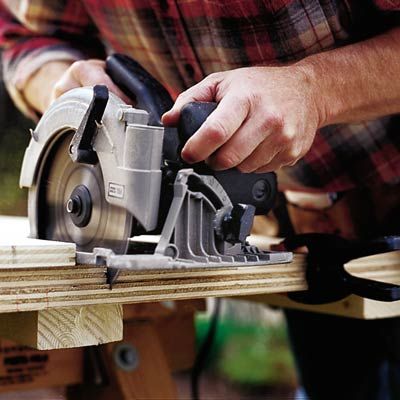
When cutting more than one piece of plywood to the same size, stack them on top of each other (or side by side in the case of dimensional lumber), clamp them together firmly, and cut the lot in one pass to save time and ensure consistency.
Beveling
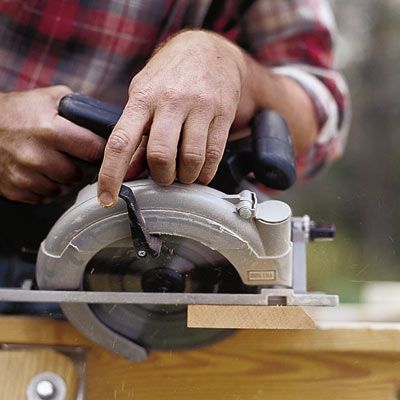
Blade guards have a tendency to jam on steep bevel cuts, so carefully nudge the guard lever with one finger to ease it over the edge. Once the cut has been started, let the lever go. Never remove the guard or rig it so that it stays up permanently.
